Story and photos by Jonathan Sharp
A press release from the organizers of this year’s Retromobile recently jogged my memory. Last year, we had Citroën shots from last year’s Goodwood Festival of Speed which were not used in VeloceToday. It was the 70th anniversary of the Citroën 2CV, and to celebrate, one of the classes at the Cartier Style et Luxe Concours was dedicated to that Gallic charmer.
Six variations of the 2CV were on display. So to kick off this year’s 100th anniversary celebrations let’s wind the clock back to last July and revisit a beautiful summer weekend in Sussex.
I’ll be at Retro next week for further Citroën Celebrations, hope to see you there!
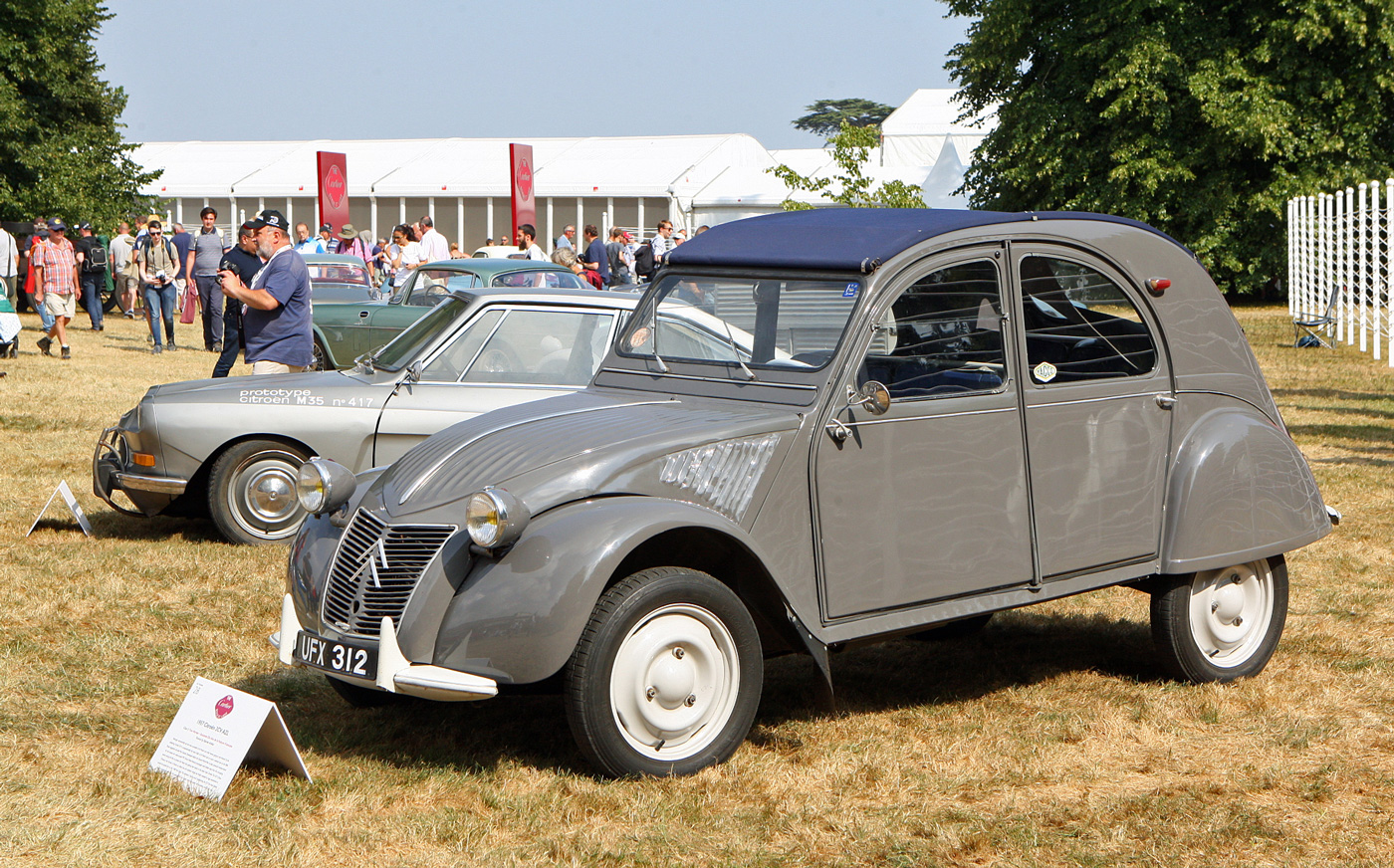
Whilst not the biggest selling French car (that accolade goes to the Renault 4) the 2CV certainly has to be the most Gallic. Launched at the Paris Motor show of 1948, this example entered by Darren Arthur dates from 1957 and has the model designation of AZL, L for luxury meaning a larger rear window, synthetic fabric soft top, striped fabric seat covers and a chrome strip down the center of the bonnet.
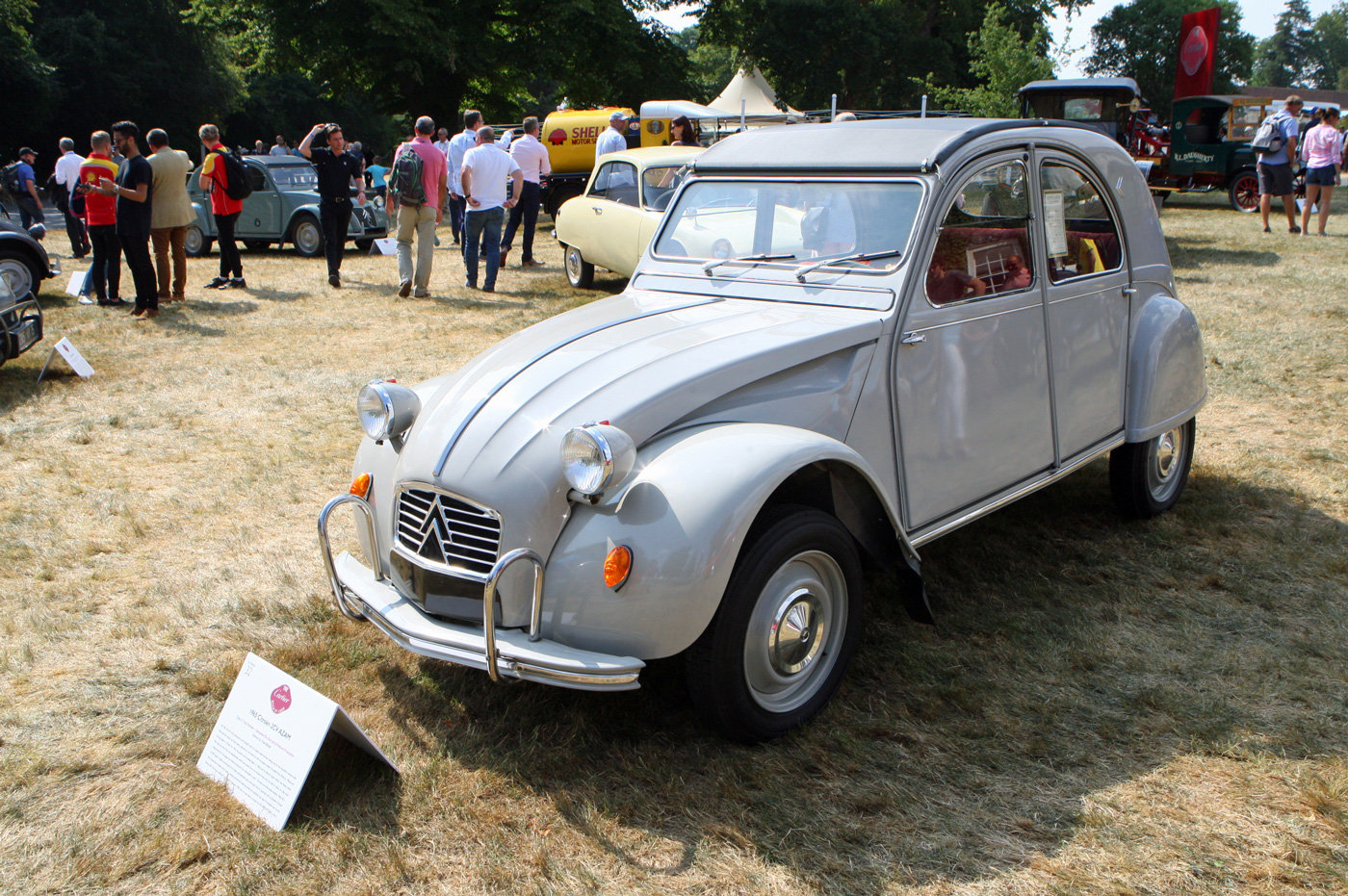
Entered by Yves Boitel, this 1965 pre-three side window AZAM export model was purchased new by well-known car collector Bill Harrah and has only covered 116 miles. By 1963 power had increased from 9 to 16 hp, the windscreen wiper was electric rather than taking its drive from the speedo cable, and the fuel dip stick had been replaced by a fuel gauge. This example, being an export model, benefits from having the plusher Ami 6 foam padded rear bench seat, the deluxe steering wheel and polished hub caps. In 2012 this car sold at auction for £47500 ($75000).
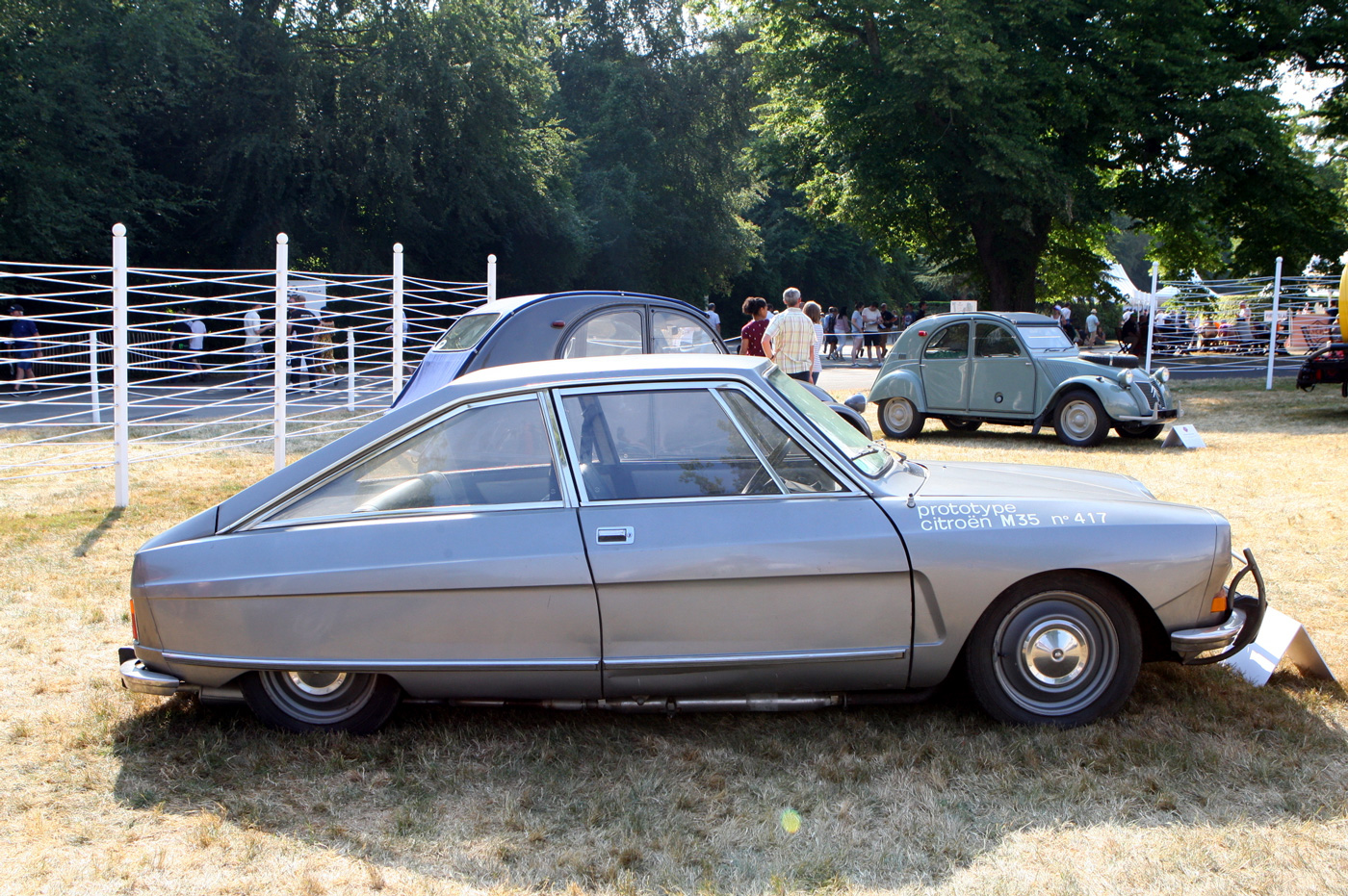
Stephen Wimez’s 1970 experimental M35 was the most powerful derivative produced over the 42 year production cycle of the 2CV.
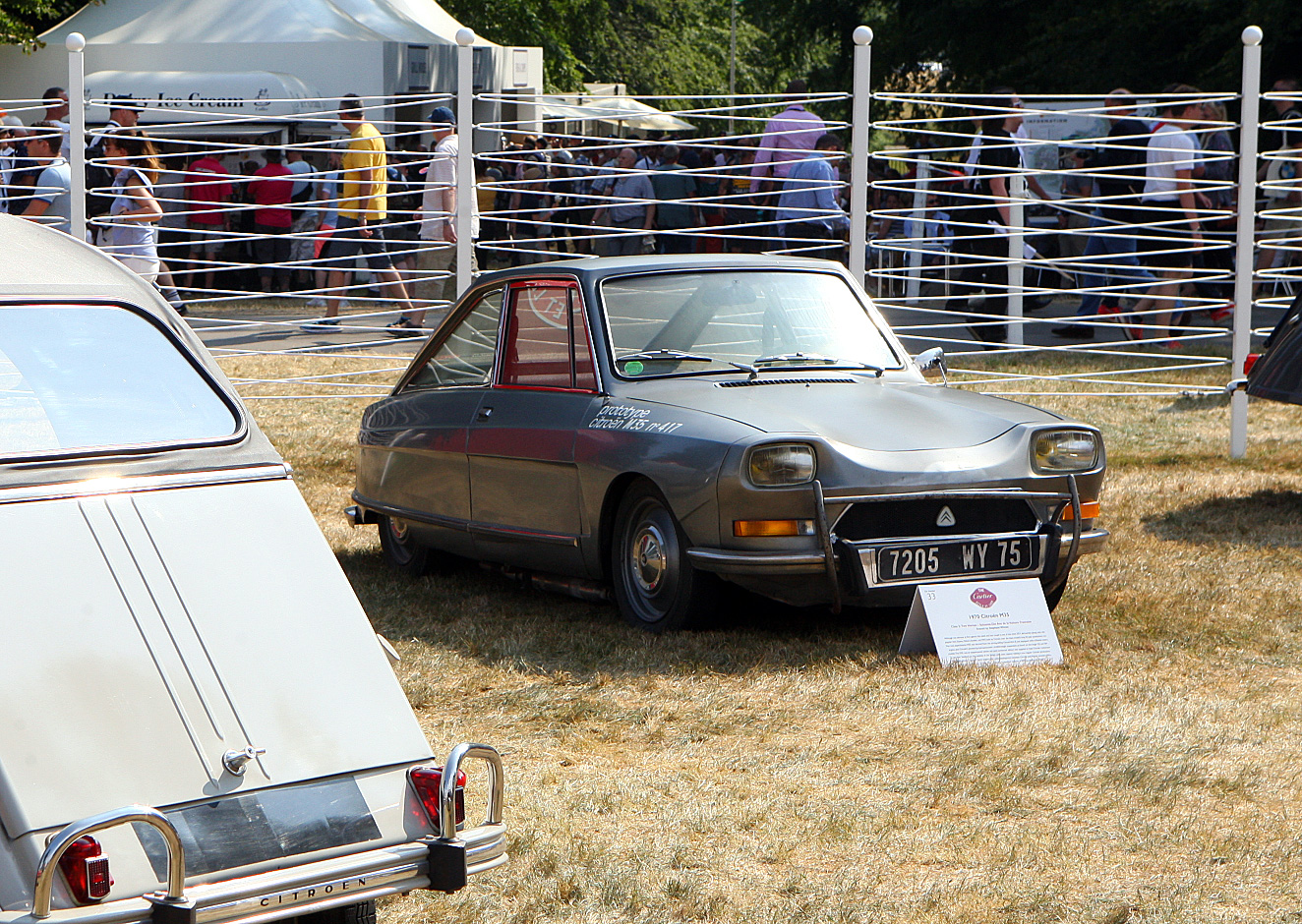
Based around the Ami 8, the M35 was powered by a 49 bhp Wankel rotary engine developed by Citroën in collaboration with NSU, and formed as Comotor in 1967. The M35 was also fitted with Hydropneumatic variable height suspension as found on the DS and SM. Each numbered example was supplied to a loyal Citroën customer to obtain their feed back on the usability of the design.
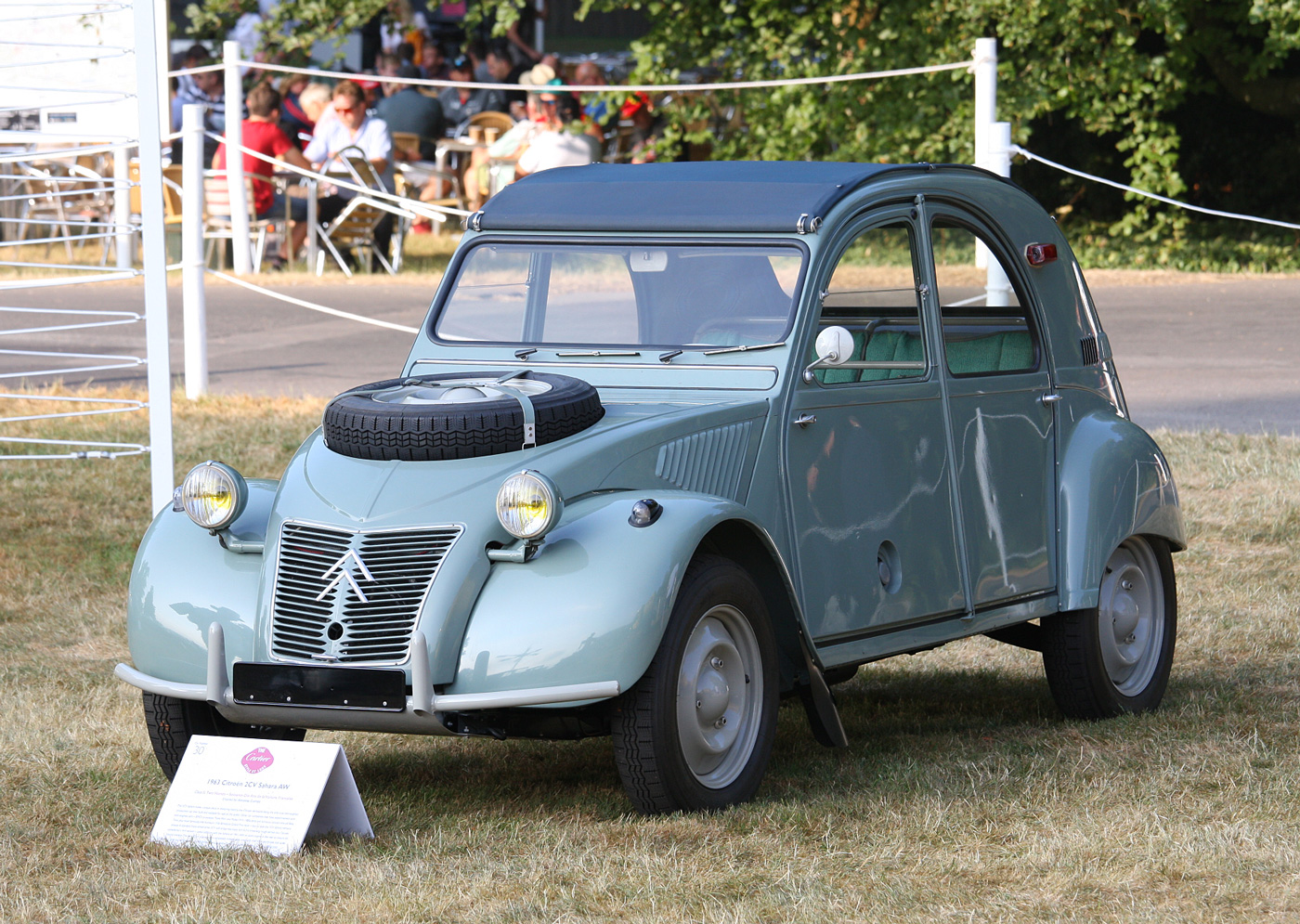
The 2CV Sahara is unique in being the only twin-engined road car that the general public could buy. Produced from 1960 through to 1966 with one more example being built in 1971, only 694 examples were constructed. The two 425cc engines were totally independent with their own gearboxes, fuel tanks and even starter buttons. Very rare and very valuable with examples now being sold for up to £200,000. This example, displayed by Antoine Cornet, dates from 1963.
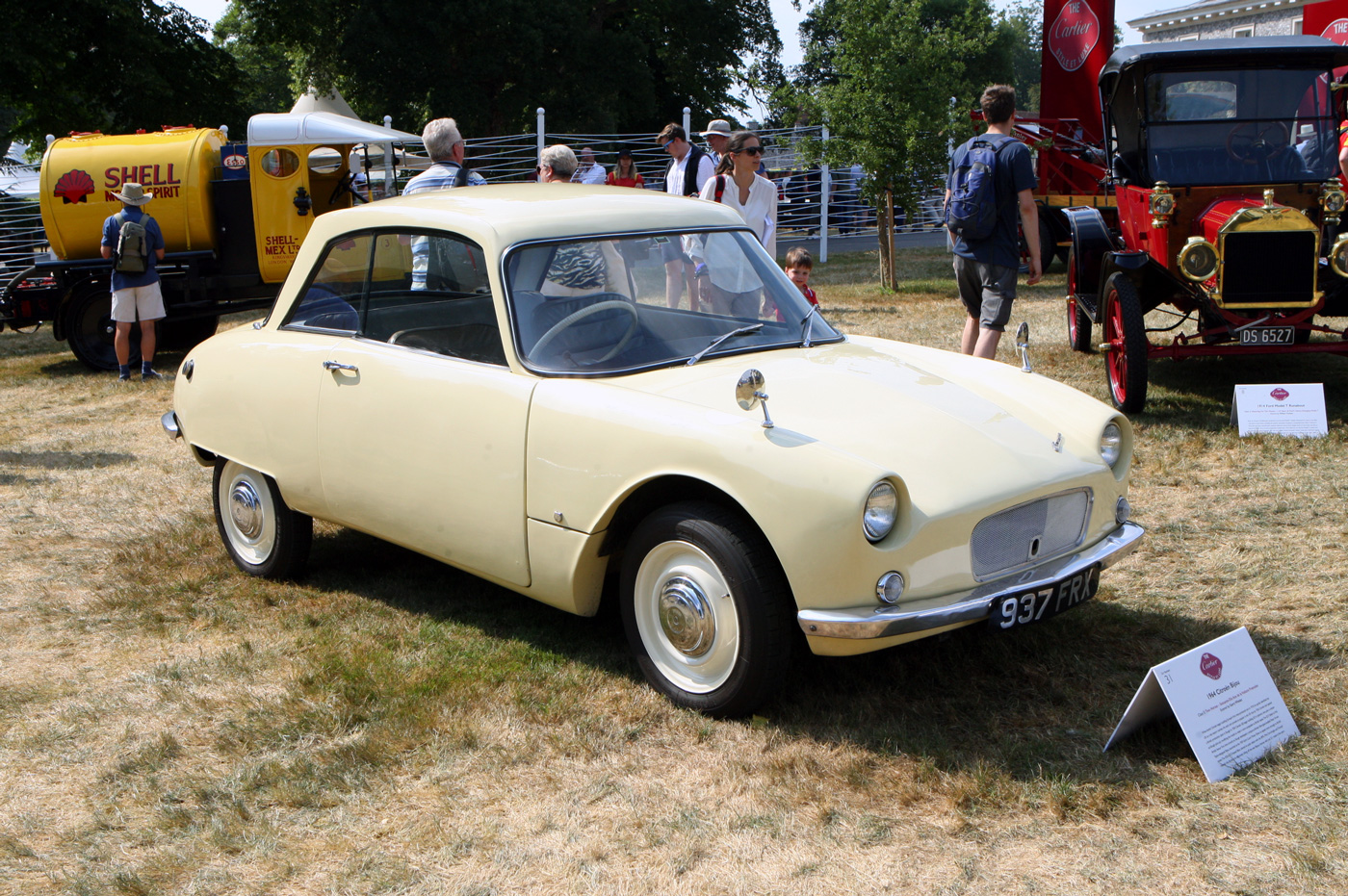
Citroën opened a British production plant in Slough close to London in 1926, by 1954 the plant was producing 2CVs in saloon, van and a unique pickup configuration. The models failed to sell in any great numbers in Britain at first, so the Slough plant developed a unique for Britain fiberglass-bodied version which they hoped would be more appealing to the British motorist.
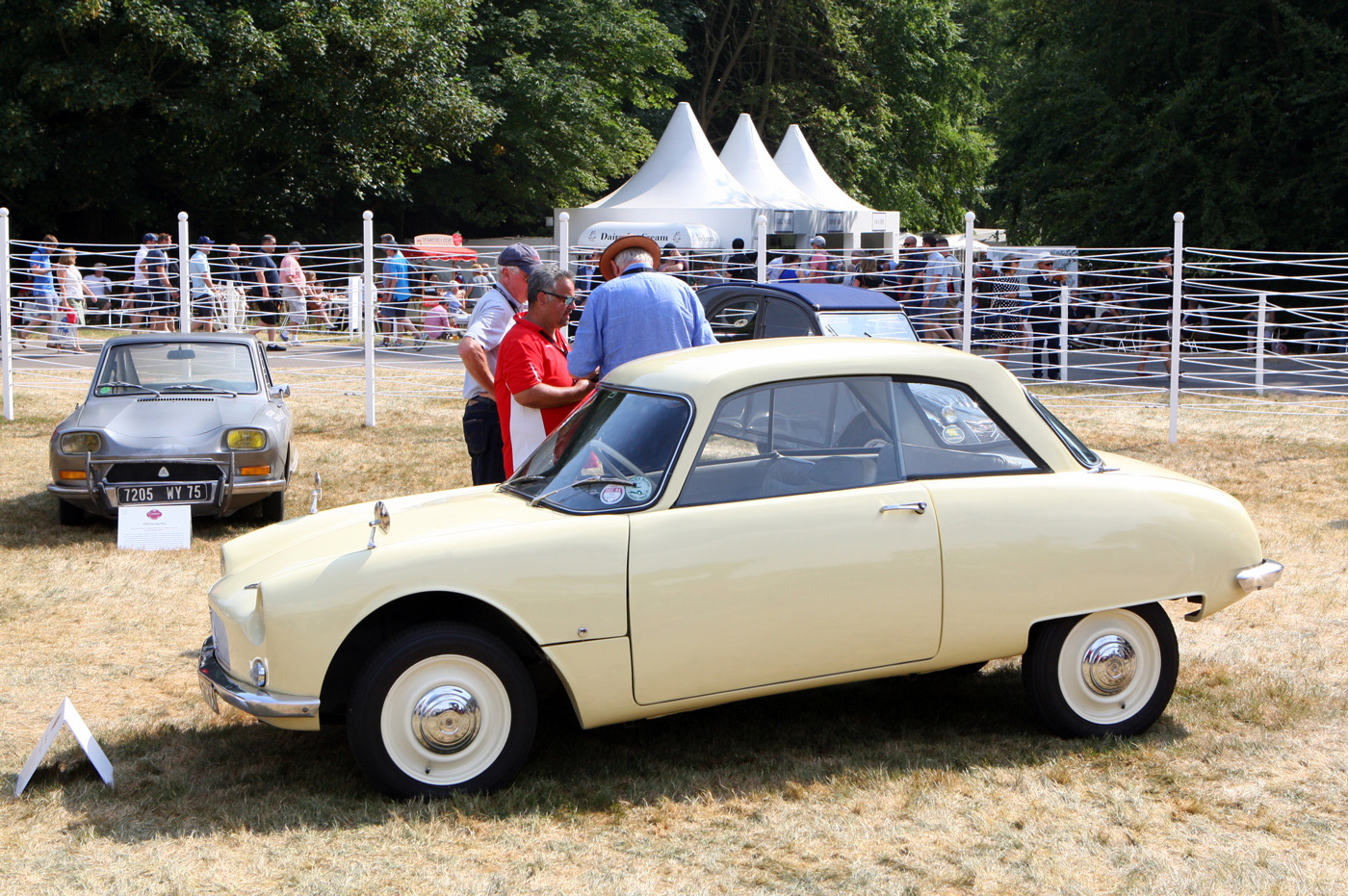
Designed by Peter Kirwin Taylor, the Bijou was launched at the 1959 Earls Court Motor show. Unfortunately sharing the lime light at the same show was the BMC Mini, Ford Anglia and Triumph Herald. In production for 5 years, only 211 examples were built. This example was entered by Gary Whelan.
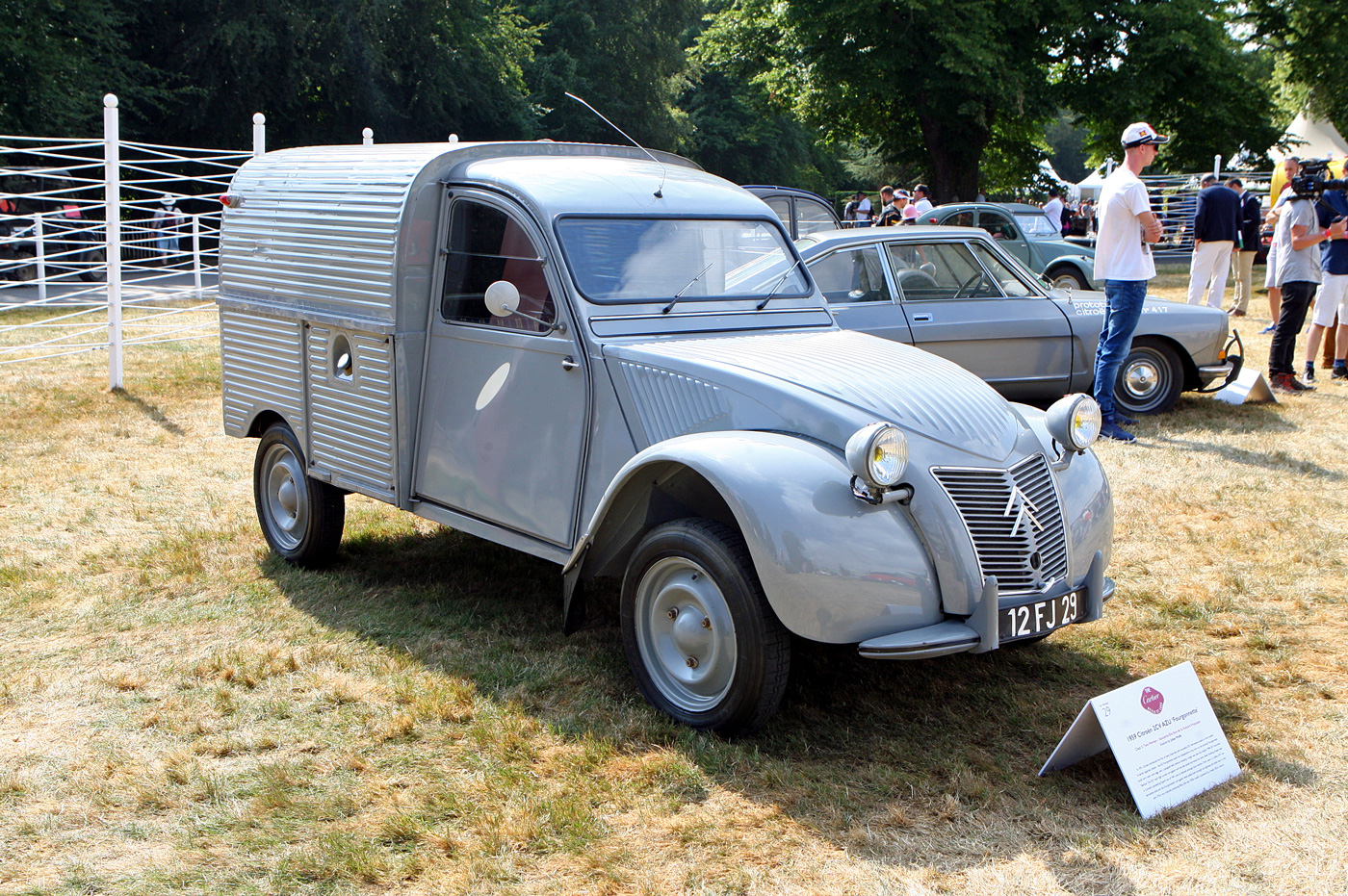
Julian Wolfe’s 2CV AU Fourgonnette van dates from 1952, The Fourgonnette made its debut in 1951. Citroën had originally intended to fit them with the 425cc engine, but stuck to the 375cc engine to avoid engine swaps with saloons. The larger engine was fitted from 1955 and the model designation was changed to AZU. The 250 KG pay load was ideal for small enterprises and artisans as was presumably the top speed of 60kph (27mph).

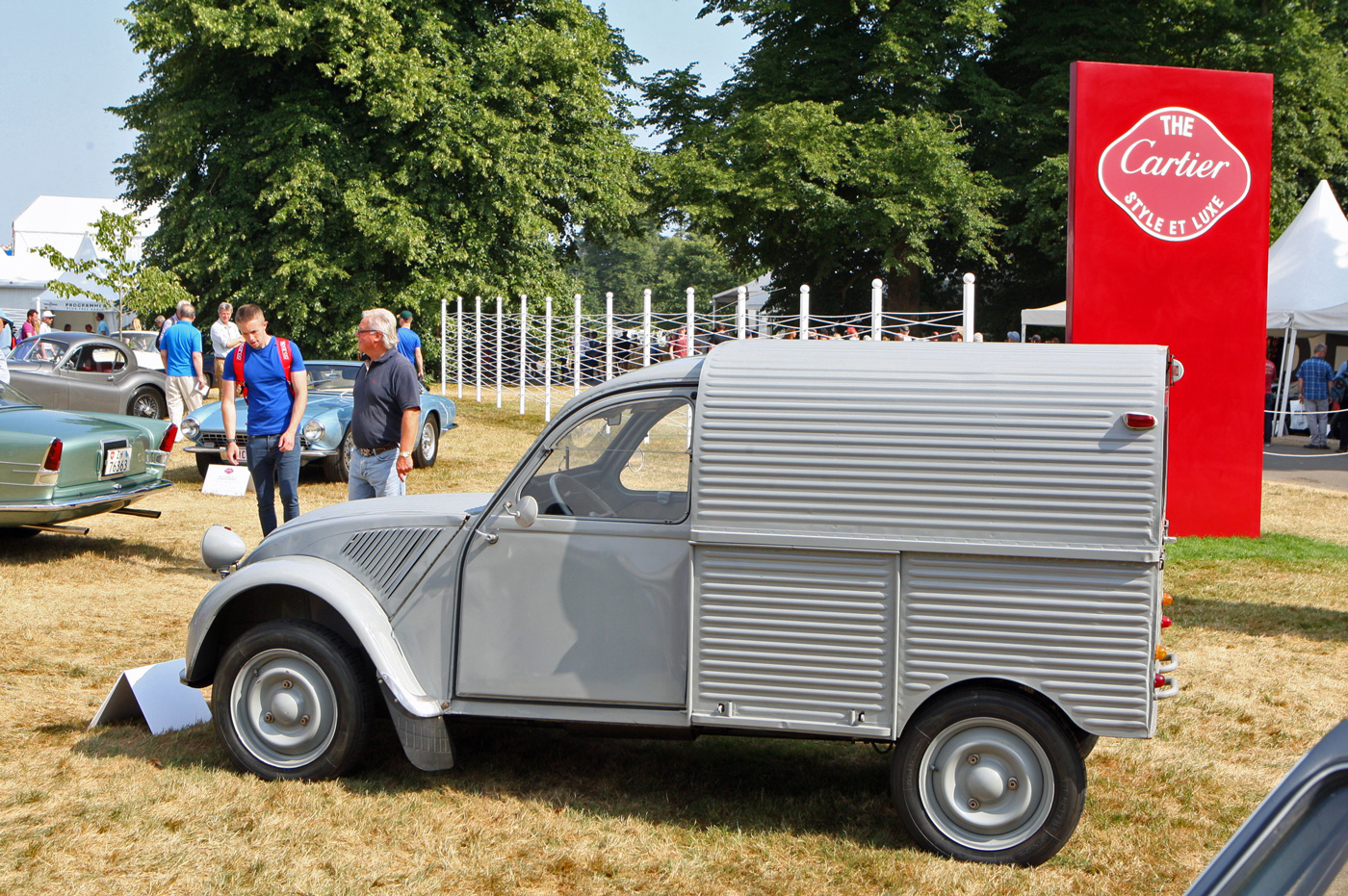
I first experienced the Deux-Chevaux as a child. It was my father’s first, er, company car sort of. He nick-named the car in a way I don’t dare to translate here. Nevertheless, he ended-up as a faithful Citroênist, but favored better models.
In heavy traffic, the “Deuche” was a nightmare due to its modest power ressources. But on empty secondary roads, you could drive it flat-out all the time thanks to its precise steering, its low center of gravity and its light weight. It was faster than France’s current speed limit allows on twin-lane roads (50 mph). And it was comfortable with a lot of space for a bunch of friends on their way to the Atlantic coast. You can still meet some “Enten” (ducklings) on German roads, they are in very good condition and a tribute to a certain image of the French way of life.
This early August Tom Warth (founder of Classic Motorbooks and then Books for Africa) and I (now a consultant with Bonhams) are driving his 2CV from Minneapolis to Monterey, and back, to celebrate the model’s 70th. If accepted, the car will be on Pacific Avenue for the Carmel-by-the-Sea Concours on the Avenue on the Tuesday (August 13). It will be five years ago that we made the same journey in his Shelby 289 Cobra. This will be the third time I have made that trip in August; four years ago I drove solo in my VW Golf R32. Our plan is still for the same numbers of nights on the road. As I look at the falling snow out of my window knowing that it is too damn cold, I can’t wait! Too much fun, to be sure. What a wonderful car.
I strongly suggest you come to Australia in 2020 for the Raid [10,000km ] & really see how great & versatile these 2CV`s actually are.
Did the Paris-Persepolis (South Iran)- Paris rally in 1972.
Great experience. The rally took a month and the 2CV never missed a beat. Extremely reliable!!